Aveydag Reserve: A treasure of spiritual and architectural heritage: Part II A historical journey on Caliber.Az
Continued from the first article.
Continuing the story of the historical and cultural reserve Aveydag, it is important to mention other sections of the complex. The area preserves archaeological monuments, ancient burial mounds, remains of medieval settlements, and sacred structures. Together, these elements create a comprehensive picture of centuries of history, where each part of the site holds the memory of different eras and peoples who left their mark here.
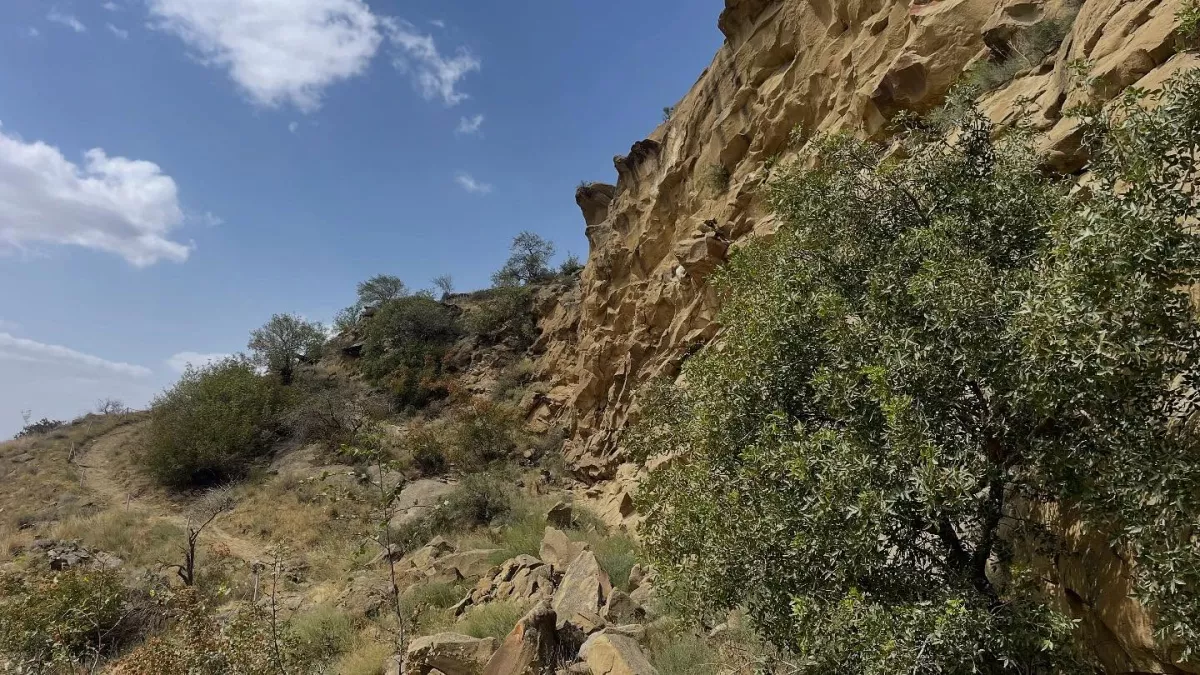
The Keshikchidag Cave Complex reflects the layered history of the origin and life of Azerbaijan’s western region. This unique ensemble stretches nearly 25 kilometres along the border with Georgia—in the boundless Jeyranchol, on the slopes of the Gatardag Ridge, 15 kilometres northeast of Lake Jandar, at an altitude of 750–950 metres above sea level. The complex contains 76 caves, offering breathtaking views of the Jeyranchol plains. Natural caves, dating back thousands of years, coexist with artificial caves from the 6th to 15th centuries, which reveal the everyday life, culture, and customs of the people of that time.
Since ancient times, numerous shelters existed here, designed to protect people in adverse conditions. Most of these are located near Keshikchigala, on one of the Gatardag ridges, at the lower terraces formed by sandy hills that once rose from the seabed. The height of these shelters usually ranges from 1 to 2 metres, sometimes reaching 3 metres, while their depth varies from 1 to 3 metres.
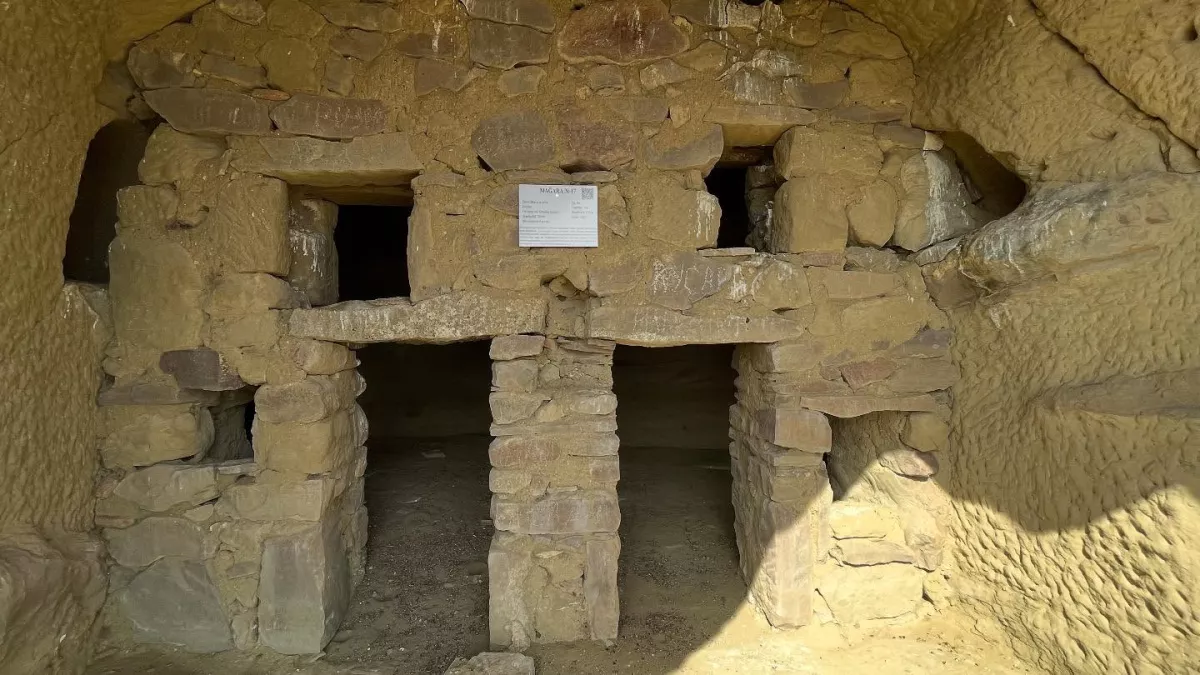
During archaeological excavations beneath the rocks, traces of hearths and animal bones were discovered. People inhabited these caves for millennia, using the natural features of the Gatardag Ridge as protection against wild animals and climatic disasters, as well as for hunting and gathering. These shelter caves can rightly be called a unique “chronicle of humanity.” They preserve remarkable architectural solutions: interior spaces were carved out for various purposes—living quarters, prayer rooms, utility rooms, and water reservoirs.
Since the natural conditions of the caves were particularly suited to ascetic life, monks who arrived in Caucasian Albania from Asia Minor in the 5th–6th centuries established long-term dwellings here. To address the problem of water scarcity, they created an elaborate system for collecting rainwater: long sedimentation channels, up to 200–300 metres in length, were carved into the sandstone, directing rainwater via drainage pipes. The water was then accumulated in deep wells, where it remained cool and fresh for extended periods.
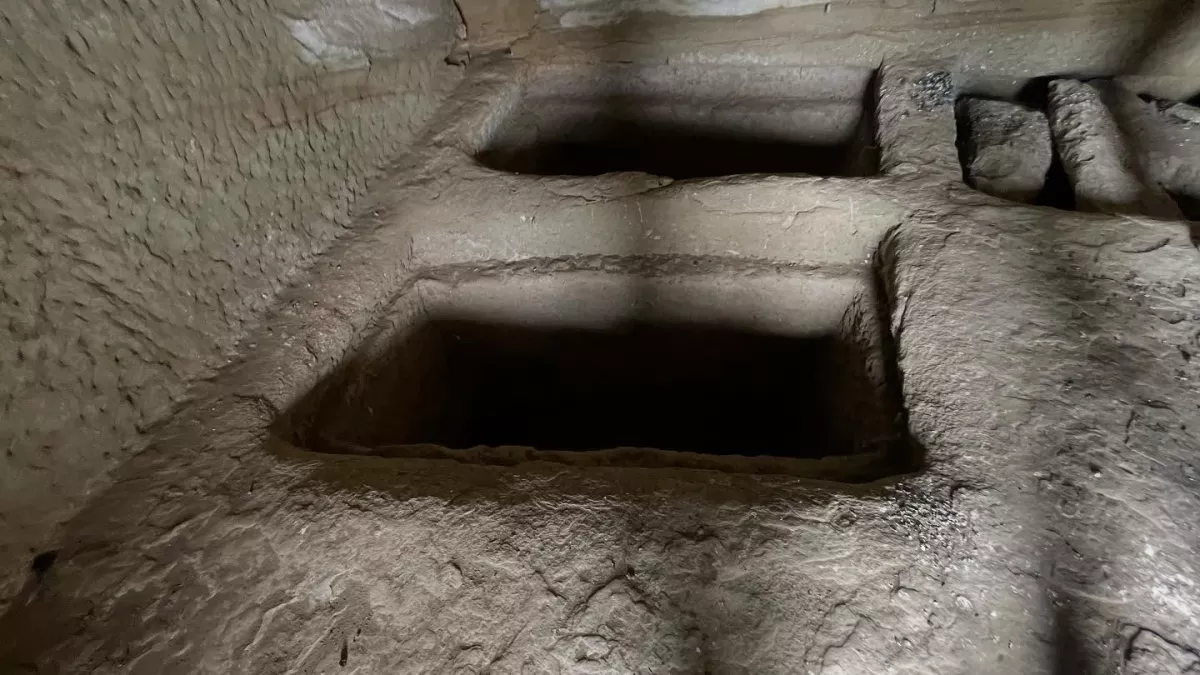
An equally important aspect of daily life was food storage. The number of storage facilities within the Keshikchidag Complex is considerable. In the upper parts of the wells, special niches were created for keeping supplies, allowing food to be preserved for long periods. Wells located near living quarters were up to 2 metres wide and 3 metres deep. Thanks to the natural coolness of the caves, these storage spaces ensured long-term preservation of provisions—a vital necessity for the inhabitants of this ancient complex.
Of particular significance are the frescoes preserved on the walls and ceilings of the cave-temple complex. These paintings are found in caves that were once inhabited by Christian monks. Despite the ancient atmosphere of the caves, the frescoes themselves were created only in the 19th and early 20th centuries.
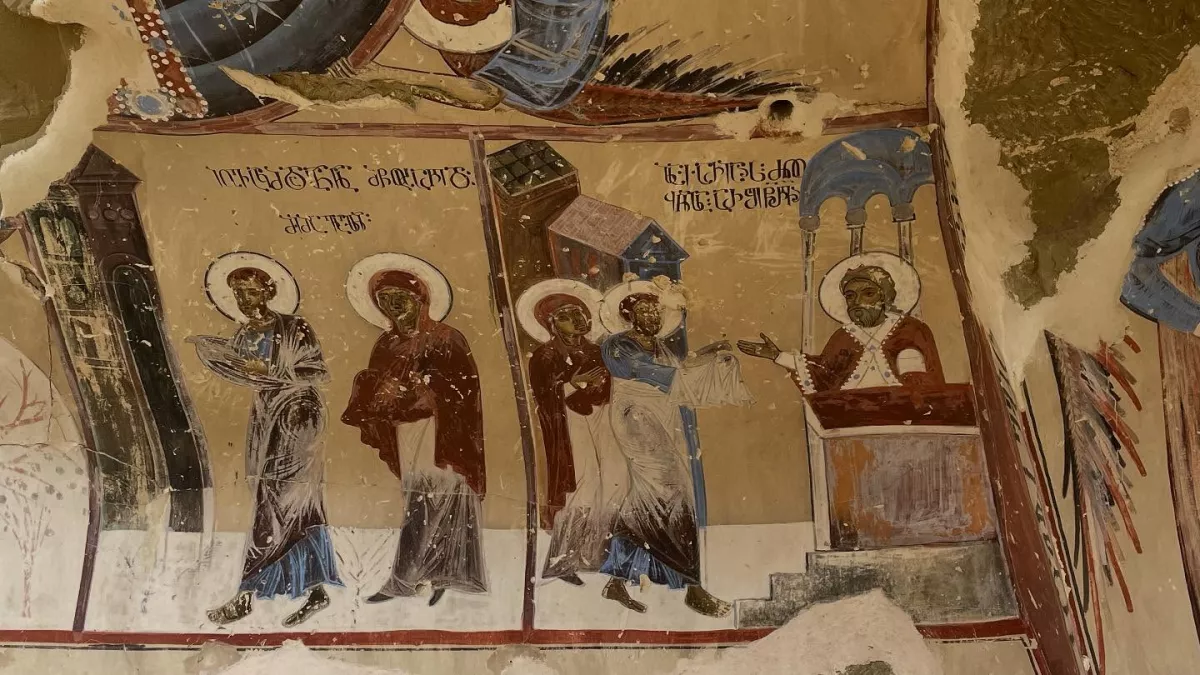
The frescoes are based on biblical themes. Watercolour was used in their creation, giving the compositions exceptional brightness and depth. These wall paintings reflect the spiritual life, worldview, and beliefs of the monks who lived there.
When speaking of Keshikchidag, one cannot fail to mention the two temples that rise at the highest point of the Jeyranchol Steppe. Built at the end of the early medieval period and situated approximately 1,500 metres apart, they are striking examples of Caucasian Albanian architecture. Their domed ceilings and stone masonry testify to the high level of architectural skill and the advanced building traditions of that era.
One of the temples, carefully carved from durable local stone, seems to merge seamlessly with the mountain massif to which it is attached. The other was constructed on a flatter plateau, right at the summit, offering rugged yet picturesque views: from the west and east, the temples are framed by mountain ridges, while to the north and south, cliffs drop steeply. The façade of one temple is adorned with a pair of narrow windows above the entrance, extending upward in stonework all the way to the roof, lending the structure a striking sense of monumentality and expressive character.
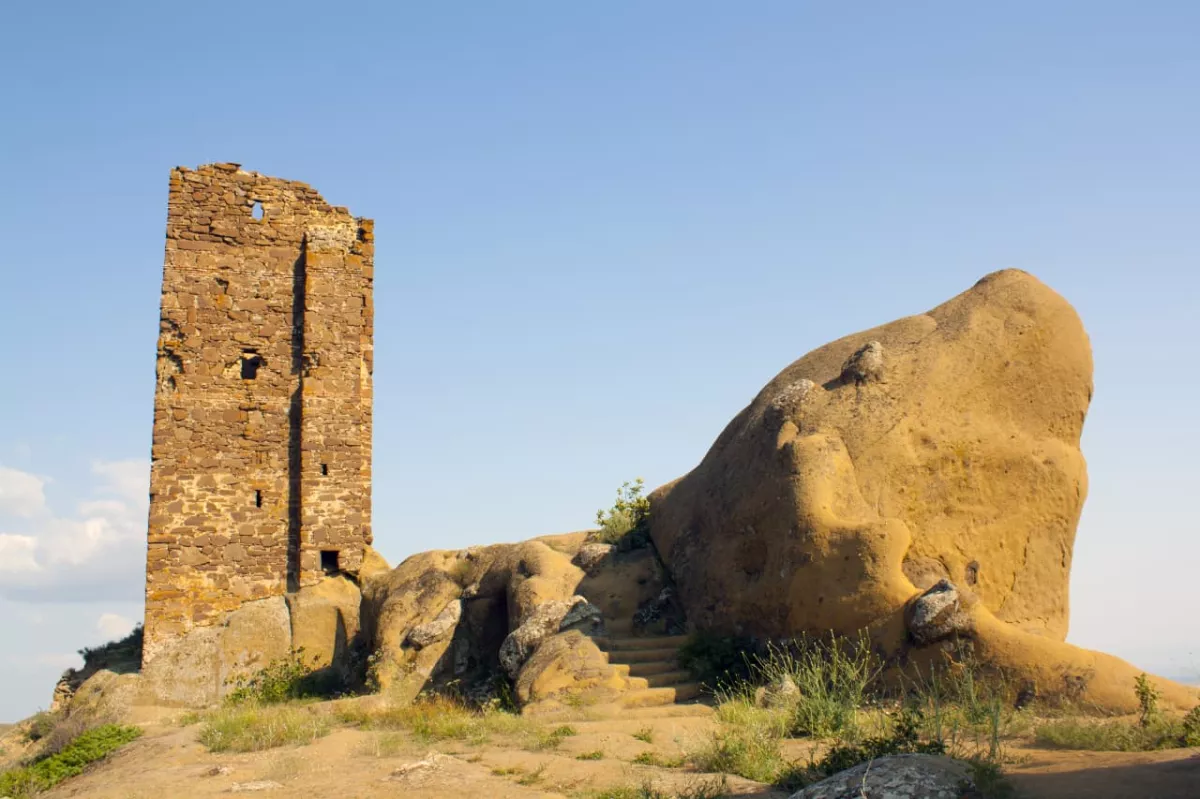
It is equally important to mention Keshikchigala—one of the ancient defensive fortifications, rising 850 metres above sea level on Galtan Mountain. According to historians, the construction of this tower-fortress dates back to the 9th–11th centuries. The structure has a quadrangular shape, standing 11 metres high with an area of 26.25 square metres. The walls are up to 1 metre thick, and the distance between floors measures 3.6 metres.
Unfortunately, the ceiling of the third floor has not survived. Each level of the watchtower features arrow slits facing all directions, allowing for control over the surrounding territory. The fortress was built using local stone and brick, with burnt lime as a binding material, which gave the masonry strength and durability. Located in a strategically advantageous position with wide-ranging views of the surroundings, Keshikchigala served as a reliable stronghold. It can be reached only via steep mountain trails, making the fortress difficult for enemies to access. Most likely, signals and warnings about invasions by foreign invaders were sent from here to alert the cave dwellers below.

On the lands where the Keshikchidag cave-temple complex now stands, livestock breeding flourished in ancient times. Palaeolithic monuments discovered in Jeyranchol indicate that humans settled and lived here from deep antiquity. Over time, these areas became a permanent refuge for nomadic tribes, which led to the emergence of numerous burial structures known as the “Valley of Kurgans.”
For a long period, systematic archaeological excavations in Jeyranchol, where the reserve is located, were not conducted. From 1948 to 1991, the territory was under the control of the Soviet Army and used as a military training ground, making entry strictly prohibited. Only after the creation of the reserve did full-scale archaeological expeditions and scientific research begin, allowing the collection of invaluable material and the discovery of rich artefacts.
Of particular interest is the discovery of a large and heavy chopper tool made from volcanic andesite, dating back to the Lower Palaeolithic. Field studies have established that the region contains more than 150 kurgans, characterised by stone burial boxes as a distinctive feature.
It is important to note the short-term exploratory excavations carried out between 2009 and 2015. During these investigations, kurgans dating to the Late Bronze and Early Iron Ages were identified. More extensive research began in December 2020. Within the framework of the projects “Scientific Research and Archaeological Work in Keshikchidag” (winter months of 2021) and “Scientific-Archaeological Excavations and Summer School in Keshikchidag-1, -2, and -3”, new burial complexes and numerous artefacts were discovered, linked to the final stage of the Khojaly-Gadabay archaeological culture, which was widespread across the South Caucasus.
Of particular interest to researchers was a unique find—a skeleton of a tribal leader buried on a throne. A cylindrical seal remained around his neck, similar to those widely used in the Ancient Near East. Its relief designs were created using glyptic techniques—engraved carving characteristic of the flourishing period of the Mitanni (Hurrian) Empire in Eastern Anatolia (15th–13th centuries BCE). This discovery not only indicates the region’s cultural connections with the great civilisations of antiquity but also reflects the high social status of the individual buried in the kurgan.
Archaeologists also show great interest in sites at the southern foot of Keshikchidag, around Agh Gol, which include settlement sites such as the First Palaeolithic Settlement, Karvanshah Valley, Garaduz, Garabig, and the Saggizli settlements, dating to the Acheulean and Mousterian periods.
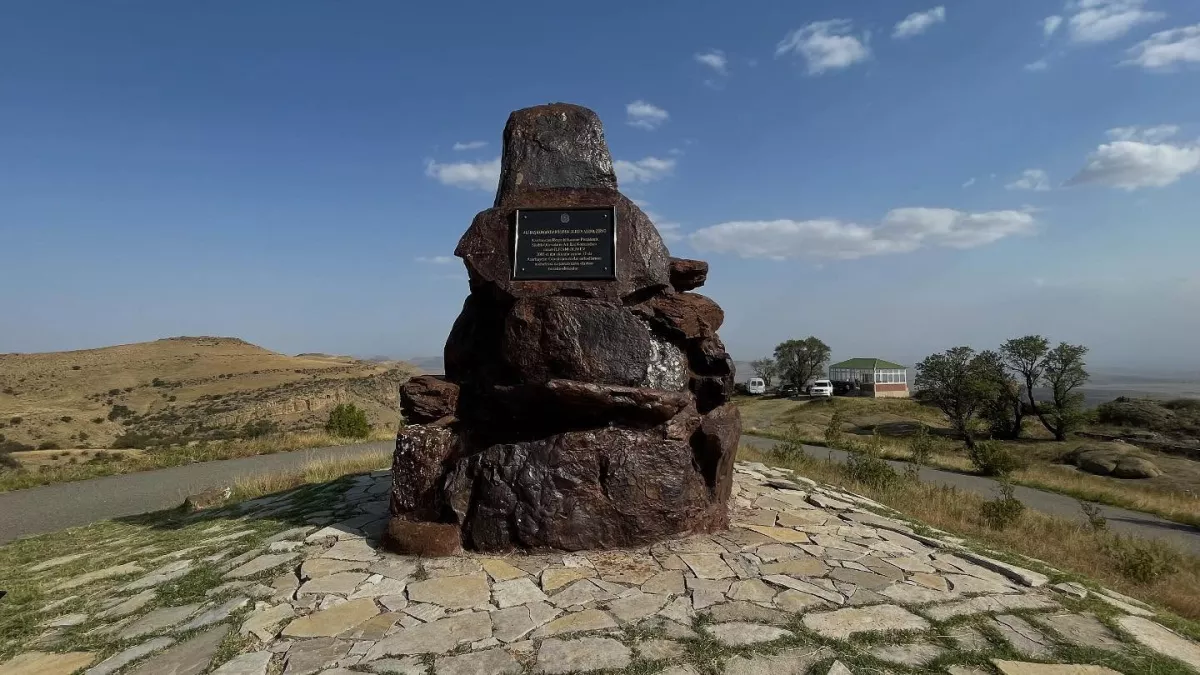
When speaking of Keshikchidag, it is also important to mention the “Ilham Aliyev Peak”, erected on one of the highest strategic heights of the western region in honour of the visit of the Supreme Commander-in-Chief. This landmark has transformed the site into a symbol of respect for modern history. The monumental monument, conical in shape and reaching 5 metres in height, is distinguished by the harmony of its aesthetic appearance and artistic design.
Keshikchidag is not merely a reserve or a collection of unique monuments. It is a sacred space where every stone carries the breath of millennia, where the silence of the mountains echoes with the voices of ancient civilisations. Here, history comes alive, and the present intertwines with eternity, making Keshikchidag a symbol of the unbroken connection between past and present.
By Vahid Shukurov, exclusively for Caliber.Az








